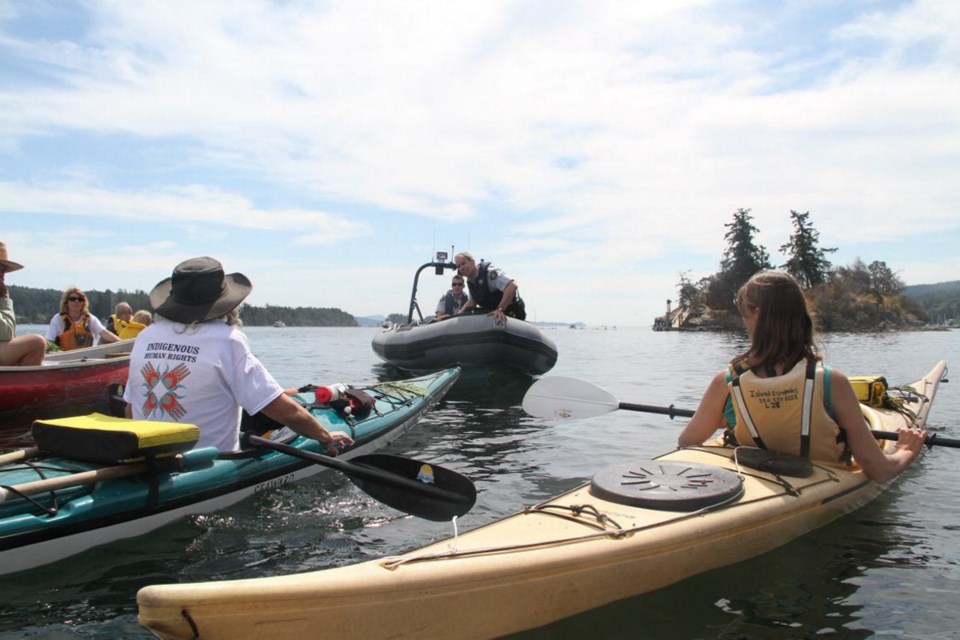Saltspring Islanders have stepped up their efforts to halt the building of a luxury home over a First Nations burial ground on Grace Islet.
About 30 boaters blockaded the main dock on the islet and prevented workers from getting to the job site on Friday morning, prompting a warning from the RCMP.
“The community really came together,” said Joe Akerman, a Saltspring resident involved in the protests. “We’ll continue every effort to stop this construction.”
Earlier in the week, protesters stopped a shipment of supplies from being delivered at the dock by standing in the drop-off spot and then marched through town.
Midweek, some tried to stop a gravel truck on the islet from spreading fill by standing under it at the shoreline, which also resulted in the RCMP being called to intervene.
Others went to the home of Slegg Lumber founders Patti and Ron Slegg and persuaded them to boycott the Grace Islet project. Slegg Lumber has 11 stores on Vancouver Island, including one on Saltspring.
“We have told all of our stores that they are not to ship any building materials to Grace Islet. Good luck to Joe Akerman and his cause,” wrote Patti Slegg in an email.
Akerman also tried to approach building contractor David Yager of West Terra Projects Inc. to leave the project.
“There’s definitely outrage in the community at this blatant disrespect of a sacred place,” Akerman said, adding the provincial government’s refusal to get involved is fuelling participation in the protest.
Grace Islet, at the tip of Ganges Harbour, is part of a well-documented ancient First Nations village site. The residential-zoned islet is about the size of three lots. It was bought by Alberta businessman Barry Slawsky in 1990. His plans to build a home were stalled in 2006 when human remains and 17 burial cairns were discovered.
This led to the B.C. Archaeology Branch becoming involved; it is mandated to protect pre-colonial remains under the Heritage Conservation Act. Slawsky had to adjust his building plans and obtain special permits to protect the burial ground.
Those permit conditions were breached during initial stages of building in 2012, spurring public calls to stop building and protect the islet. Slawsky was later issued new permits and major construction began this spring.
“When the minister [Steve Thomson, minister of forests, lands and natural resource operations] sits on his hands and turns a deaf ear to repeated requests by First Nations and others to intervene, there comes a point when people take action in their own hands,” said Gary Holman, NDP MLA for Saanich North and the Islands, who observed Friday’s protest from the shore.
Thomson said the government would not intervene unless permit conditions are violated.
Recent aerial photos of the islet appear to show permit violations, including cairns abutting foundation walls or encased, tools strewn in no-work zones and graffiti desecration, according to the Penelakut First Nation and Saltspring archaeologist Eric McLay.
Branch staff inspected the Grace Islet site this week, the first time since May 2013, but did not observe any permit violations, according to a ministry spokesman.



